Buddhist schools at the time of the Second Council at Vaisali (and the subsequent Mahasamghika Council).
Part 7
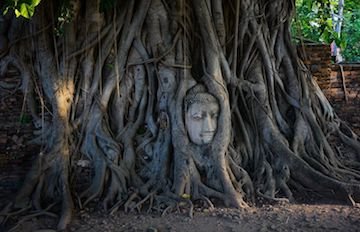
In Part 2 of this series, we looked at the Second (and First) Council of Buddhism, and gave a general overview of: who participated, what was discussed, where it was held, and why it was necessary to convene it in the first place. As was mentioned in Part 2, the Second Council had no president, but instead, eight elders formed a body of referees to deal with the raised disputations. Four elders were from the East, and four from the West. The second Buddhist Council was held at Vaisali, about 100 years after the Buddha’s final Nirvana.
Two schools existed after the schism that resulted from the proceedings of the Second Council:
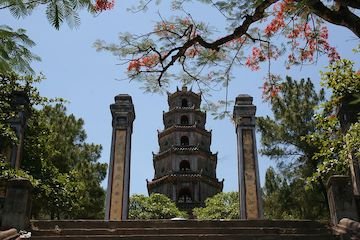
The Sthaviravada — school of the elders
The Theravada Vinaya mentions the ten non-permissible actions of the Vajjian monks, discussed in part 2 of this series, as the reason why the Second Council was held. This shows the Sthaviravada school accentuated the importance of the codes of conduct.
The followers of the Sthaviravada accepted the outcome of their own Second Council at Vaisali, and rejected the outcome of the subsequent Mahasamgiti council that was held afterwards by the Vatsiputriya followers.
The Dipavamsa account mentions the Mahasamghika school in a bad light, that they made alterations to the ‘original’ Sutra and Vinaya texts, changing the arrangement of the texts, as well as the way in which they should be interpreted.
Concerning the status of attainment of the Arhat compared to the Buddha, the Mahasamghika argued that the Arhats realization was not the equivalent of the Buddha, as the Arhat realized the truth of the emptiness of the individual self (pudgala sunyata), but not the emptiness of all conditioned worldly objects (dharma sunyata).
According to the Theravada, the Arhat is fully emancipated, the same as the Buddha; the Arhat has realized the excellent goal (sadattho), is free from aversion and craving, hatred, and ignorance, free from all impurities, and relieved of the burden of the attachment to the clinging aggregates (khandhas).
The Mahasamghika — school of the great following
The Sarvastivada account of Vasumitra mentions the five points of Mahadeva, also discussed in part 2 of this series, as the reason why the Second Council was held. This shows the Sthaviravada school accentuated the importance on doctrinal disagreements.
The followers of the Mahasamghika rejected the outcome of the Sthaviravada Second Council at Vaisali, and held their own subsequent Mahasamgiti (great congregation) afterwards. In more detail, they rejected the following parts, and considered them not being the word of the Buddha:
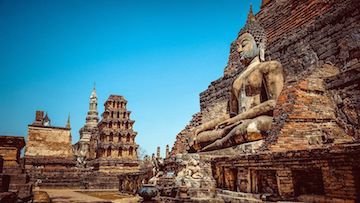
- The Parivara (concluding part of the Vinaya in nineteen chapters, being a summary of the whole Vinaya).
- The six books of the Sthaviravada abhidhamma pitaka.
- The Paṭisambhidamagga (twelfth book of the Khuddaka Nikaya; an Abhidhamma type text, explaining how analytical knowledge can be acquired).
- The Niddesa (commentarial work of parts of the Sutta Nipata, included in the Khuddaka Nikaya; divided into two books: Culla-Niddesa, Maha-Niddesa).
- Some parts of the Jatakas (tenth book of the Khuddaka Nikaya, containing Buddha’s ‘former birth’ stories).
The Mahasamghika school can be considered as the forerunner of Mahayana, the great vehicle of Buddhism that developed in full detail centuries later. The Mahavastu text, the first book of the Vinaya of the Lokottaravada, a branch school of the Mahasamghika, includes many Mahayana traces—especially the full detailed treatment of the ten stages of the path (dasabhumi) that are considered a Mahayana doctrine.
According to Vasumitra, the Mahasamghika original doctrines (mula-samaya) held that the Buddha was transcendental (lokottara). The Mahasamghika had fifteen doctrinal points concerning the Buddha and the Bodhisattva, of which the transcendental nature of the Buddha was the foremost one. There is a big difference though: The Buddha that is discussed by the Mahasamghika is not the historical Buddha. Their standpoint is, that the historical Buddha is only the Manifested Body (nirmana-kaya) of the Enjoyment Body (sambhoga-kaya), whereas his transcendental nature is the Dharma Body (dharma-kaya).
According to the Chinese pilgrim Yuan-Chuang, the Mahasamghika school divided their canon of Buddhist texts into five parts:
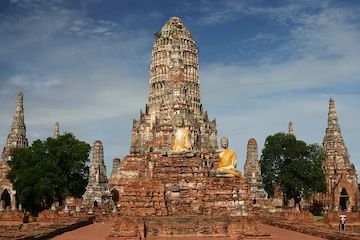
- Sutra (teachings of the Buddha)
- Vinaya (codes of conduct)
- Abhidhamma (the higher teachings, commentarial and analytical in nature)
- Dharani (texts dealing with specific spiritual powers)
- Miscellaneous
Archeological evidence exists, in the form of inscriptions, referencing the Mahasamghika school by name:
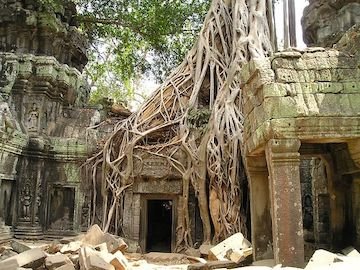
In the next article, the Buddhist schools at the time of the Third ‘Asoka’ Council will be discussed.

- Introduction to the history of Buddhist Councils and Schools-Part 1
- The Buddhist Councils — Who, when, where, and why?Part 2
- The Buddhist Councils — Who, when, where, and why?Part 3
- The History Of ‘Northern Buddhists’ of Sarvastivada - Part 4
- The History Of ‘Northern Buddhists’ of Sarvastivada - Part 5
- Buddhist schools at the time of the First ‘Maha-Kasyapa’ Council at Rajagaha. - Part 6
- The Ten Stages of the Mahayana Bodhisattva Path-The Two Preliminary Stages-Part 1
- The Ten Stages of the Mahayana Bodhisattva Path-The Two Preliminary Stages-Part 2
- The Ten Stages of the Mahayana Bodhisattva Path-The Two Preliminary Stages-Part 3
- The Ten Stages of the Mahayana Bodhisattva Path-The Two Preliminary Stages-Part 4
- The Ten Stages of the Mahayana Bodhisattva Path-The Two Preliminary Stages-Part 5
- The Ten Stages of the Mahayana Bodhisattva Path-The Two Preliminary Stages-Part 6
- The Ten Stages of the Mahayana Bodhisattva Path-The Two Preliminary Stages-Part 7
- The Ten Stages of the Mahayana Bodhisattva Path-The Two Preliminary Stages-Part 8
- The Ten Stages of the Mahayana Bodhisattva Path-The Two Preliminary Stages-Part 9
- The Ten Stages of the Mahayana Bodhisattva Path-The Two Preliminary Stages-Part 10
- The Ten Stages of the Mahayana Bodhisattva Path-The Two Preliminary Stages-Part 11
- The Deathless In Buddhism
- The "Timeless" Teaching-Being Beyond Temporality
- The Nine Successive Cessations In buddhist Meditations - Part 1
- The Nine Successive Cessations In buddhist Meditations - Part 2
- The Nine Successive Cessations In buddhist Meditations - Part 3
- The Twelve Links Of Dependent Origination
- THINGS to DEVELOP and THINGS to AVOID
- The First Noble Truth
- The Second Noble Truth
- The Third Noble Truth
- The Fourth Noble Truth
- 10 Fold Path Series
- EATING MEAT — WHY THE BUDDHA WAS NOT A VEGETARIAN
I will flag comment spam at 1% strength. If you keep on spamming my post, I will flag you at 100%. I don't care if you have limited English abilities, write a couple of sentences about this article, no copy-paste, please. I will flag: one sentence comments, links to your blog and begging for up-votes and follows. Also, I will flag comments that have nothing to do with my blog's article. I will also check your comment section to see if you have been comment spamming on other blogs.
I have long waited for your posting my friend, in the world of Islam there is a radical divide that is between Wahhabism and ahlussunnah, according to some radical Islamic expert is islam that comes from wahabiah
I read the most significant split happened between Mohammad's son and the original group that followed Mohammad, is this true @steemitcountry and thank you for your patience. I've been busy with family matters, and I think I caught a cold (flu) my family had. Darn it! I thought I had avoided the illness...hahaha
I hope you and your family are healthy and happy.
It breaks my heart hearing about your illness, you and your family. Wish you a quick recovery. May God almighty grant you strength and free your household from all form of diseases.
Wish you a quick recovery friend.
I have been having lovely talks with God @ohakfarm; I feel all wrapped up in God's love. I grew up Christian and used to walk to Church by myself because my Mother didn't go to church. My father was Nondenominational Christian; he died when I was five years old. I continued going to the church he took me too before he died.
It means you have Christian background and knowledge. That's amazing !!
You are a woman of faith and I like that.
perhaps the literal meaning you read is a schism between Ali bin Abi Talib and Bin Man bin Affan, Ali bin Abi Talib is the husband of siti Fatima (the youngest daughter of Muhammad), while Usman is Muhammad's friend, The source of the problem is the incitement of Abdullah bin Ubay, the problem this you can find "the origin of the Shia"
Alhamdulillah we are all healthy ,, my wife missed you so much, she worried you, she remember you more than me, i am almost jealous, ha ha ha
Don't be jealous; I feel blessed by your friendship and love. Hopefully, when my Daughter's family is settled I can travel the world with my husband and visit some of my Steemit friends, you all will be on my list.
@steemitcountry, that's the split I remember! Thank you and I will look into the matter a bit more so we all can share information and compare Buddhism and Islam easily.
The whole history behind Buddhism is truly incredible. You are wonderful to share all this information, I would like my mom to study this a bit to control her anger attacks
Buddhism is one of the oldest surviving religions @denissemata, it has a long history, and argumentative humans ran the institutions that grew around Buddha's original teachings. The schisms were bound to happen. Especially when kings and noble people funded the Buddhist institutions, the competition was fierce!
Both the teaching is focusing on how to free from ignorance, hatred, aversion and craving. They are trying to free up from all inequalities.
Though learning and meditating about the teaching of buhda can be difficult, but with a lot of dedication and commitment, it will become more interesting. Thanks for sharing the knowledge @reddust
If you are free of all negative mindsets and not bound by the aggregates, five khandas
rupakkhandha (rupa), means form (the body) vedanakkhandha (feeling), sannakkhandha (remembrance or perception), saokharakkhandha, including all cetasikas except feeling and sanna, and vinnauakkhandha, including all cittas.Your ability to see reality as it is will be true <3
The ability to see without the veils of conditioning and negative mindsets helps one choose the right action that will not cause harm to self or other.
https://www.wisdomlib.org/definition/five-khandas
You are very right, ability to see without the veil of conditioning and negative mindset always drive us to make better choices.
hopefully your health is always my friend, I wonder where you've been ,,,
schools in Islam teach about monotheism and tasauf with some schools (mazhab), in the matter of fiqih also so, I myself in tauhid bermazhab Abu hasan Asari, in fiqih bermazhab imam syafii and in tasauf to junaid al-Bagdadi
Buddhism believes there are many supernatural beings and Gods including the Christian and Muslim's Gods are subject to karma and eventually will wear out their good karma and die, most will take rebirth in human form unless they are a particularly violent hateful god and fall into the hell realms. The world human's live in is called the desire realm. If you think about it, every action we take, ever thought we have and feeling we feel is fueled by desire; this is why the place we inhabit is called the desire realm.
there is little fundamental difference between Muslim and Buddhist beliefs, god in Muslim belief is a Substance (immortal), never dead and never born again, they take the excuse that if God were born there will arise a further question, who gave birth to mother god, and so on, thus taking the conclusion that god is not born
I don't follow all the Buddhist beliefs, although I do believe there are beings much like you and me that don't have a corporeal body, our senses cannot pick up their energy because it is so subtle. I think the God of Muslims, Christians, Jewish and even the religion of Woton (Odinism), even Buddhism Buddha Nature (the seed, the potential of Buddhahood) is pointing to what is not a thing, it is not one or many and there is no way humans can honestly know what is not a thing. However, we can have insight into this, and that is metaphysical and esoteric teachings take us. Very few people can go beyond the world of things because it cannot be grasped.
Buddhist do no deny the Gods; most arguments are aimed at a God creating humans. Buddhist arguments seem to think Gods that think they create life are crazy...
I don't go into these arguments because they do not help me with my practice and the arguments hurt people's feelings and may cause them to doubt. I don't want to cause anyone to question their religion.
This post was full of things that are new to me and some that I have no idea about ( I seriously need to sit down and start learning).
But I came across something really interesting. I never knew that Mahasamghika was the forerunner of Mahayana branch. Maybe you mentioned it before and I missed it or I forget but this fact seems really important. Given the fact that Mahayana is the largest existing tradition of our times (more than half, if internet is right).
I actually thought that Mahayana tradition existed since the times before Samrat Ashoka. Thanks for sharing all this information and of course thanks to your husband as well!
@hashcash, this is controversial because Theravada says they are the oldest surviving school. However, as more archeological discoveries are translated, it seems Mahayana like schools pre-existed the school called Theravada. Many canons have been lost forever so we may never know what the original teachings contained for each school. One point that can't be argued the sutta's in the Theravada Pali Canon, the Chinese Agamas, and Tibetan Canons are almost identical. That in itself is remarkable.
The greatest unexplored places are within our heart and science can't go there...hahaha. The Buddhist path is indeed difficult, but what else is there to do in this world? Thank you for visiting @amigoponc, I may not be on the net for a few more days because of family, and now I think I am catching the flu everyone else has had.
Buddhism has quite a history and it is amazing how archeology authenticates religion. Thanks @reddust
Buddha walked this earth over 2,500 years ago; it's hard to believe his teachings are still alive. That in itself says a lot! Thank you for stopping by @enjoywithtroy.
Very interesting this serie because you can learn the history behind a "culture" so in that way people can value the progress of their founders
Most schools got their names from the regions they settled in, this series has helped me understand how religions grow and eventually fall like an old tree. Buddha said or maybe it was a follower of his, the Dhamma he discovered (his teachings) would only last 500 years past his death; he missed the mark by a few thousand years lololol
That's very interesting red people have to understand the history behind all people practise, for example i like to read about how was the begin of yoga. Regards
Yoga was developed to help the yogi deal with energy released during long retreats. It is intimately tied to the practices that are for enlightenment. Separating the meditation methods from their spiritual ties saddens me. Yoga and mindfulness meditation is marketed as a product, fast food religious practices...pffft...hahaha
It's so incredible I mean I use to think budism was a bit related to one's like Judaism but it's more complex and the branches seems even complicated, how come you have so much indept knowledge?
@josediccus, my husband and I have been studying Buddhism for over 20 years, 15 years together, we have lots of books...hahaha <3
wow that's so much time and I'm not so surprised how much you've garnered so much know knowledge, do you now consider yourself an ardent Buddhist?
I don't have enough energy at 58 to be ardent about anything...hahaha <3 (don't tell my husband that).
I was ardent the first five years of practice but discovered equanimity (upekkha), and now my energy is spent wisely ;-)
Brilliant post. Got to learn a lot from this post. It was very cultural and historic. Loved the views about Buddhism. It is somewhat similar to Islamic views. Keep up the good work dear.😊😊😊
@beautifulplaces, my husband and I are enjoying writing the series too, thank you!
Actually my knowledge about Buddha's philosophy was very little. It is great to get to know a different perspective of the search for fulfillment and happiness. A great trip that you offer us through your post, I congratulate you once again and I hope to continue learning. regards!
@sonny-albornoz, the amount of knowledge that has been lost, especially when China took over Tibet is enormous. However, Korean, Chinese, and Japanese Buddhist schools have kept most of their teachings intact. Theravada has complete instructions for its school as well. But most have not been translated, so the vast amount of information and doctrine are still unknown to the West.
It is a pity that this knowledge has been lost. At least there is something left to learn and enjoy. Let us hope that the doors will be opened soon so that the West can have more access to this wonderful world full of wisdom.
I was thinking buddah was vegan :v . greez. s. error
Interesting story about great Buddhism. a mysterious school.
Thank you @wendyth16
amigo soy sincera no hablo mucho el ingles me llamaron mucho la atencion tus fotografias y en tema concerniente al budismo no busco votos ni hacerme popular solo comento lo que realmente me gusta saludos..
interesting story I really call my attention I like Buddhism, now I follow you seem interesting and learn something more with your contribution, I have seen that you have been a little sick I cover you with the blood of Christ to heal you is powerful
have a wonderful and blessed day @reddust
wonderful story really interesting friend I would like to read more about this topic I need to relax more, I have a lot of pressure, you are fantastic blessings <3
Great creative article and a vreat historic story aswell. The opinions about buddhist early schools and point of view is consistence. I agree witb ur points @reddust☺☺
buddhism is one of the greatest path of peace... you are doing a great job @ reddust....
my friend @reddust,I wonder where you are,Schools teach monotheism and tasawabs in some schools, so also on the jurists, I am Tauhid Barambough Abu Hanan Asrari, Fakih Baramabad Imam Sifa and Tasauf Junayed Al-Bagdi